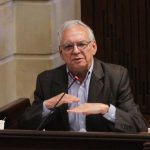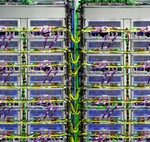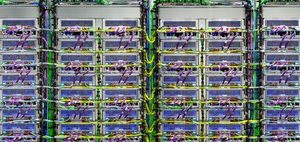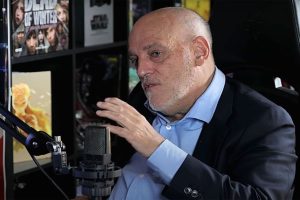Controlling chemical reactions to generate new products is one of the great challenges of chemistry and advances in this line of research have repercussions in the industry, for example, by reducing the waste generated in the manufacture of materials for the construction or improving the production of catalysts used to speed up chemical reactions.
For this reason, in the field of polariton chemistry, which uses chemistry and quantum optics tools, in the last ten years different laboratories around the world have developed experiments in optical cavities to manipulate the chemical reactivity of molecules at room temperature, using electromagnetic fields. Some have managed to modify chemical reactions in organic compounds, but to date, and without relevant advances in the last two years, no research team had managed to have a general physical mechanism to describe the phenomenon and that would allow it to be reproduced to obtain the same measurements. consistently.
Now a team of researchers from the University of Santiago de Chile, part of the Millennium Institute for Optical Research (MIRO), headed by principal investigator Felipe Herrera, and a laboratory from the chemistry division of the Naval Research Laboratory, from the Department of United States Defense, led by researcher Blake Simpkins, has announced that, for the first time, it has been possible to manipulate the rate of formation of urethane molecules in a solution contained within an optical cavity.
This discovery demonstrates for the first time, both theoretically and experimentally, that it is possible to selectively modify the reactivity of certain chemical bonds in a chemical reaction at room temperature in a liquid solvent, through the influence of the vacuum of the electromagnetic field in a narrow range of infrared frequencies. “This is a theoretical discovery that improves our fundamental understanding of the phenomenon compared to other models that limit themselves to explaining partial aspects of the experimental observations or that simply refute the experimental evidence completely”, comments the researcher Felipe Herrera.
New limits to manipulate molecules
Why is it so difficult to control chemical reactions? When chemical reactions take place, the bonds that unite the different atoms that make up a molecule are broken and rearranged, forming new substances which are known as products. For this process to occur it is necessary to apply energy and there are various physical-chemical principles that since the end of the 19th century have helped us understand how these energy transfers are generated according to the laws of thermodynamics.
Likewise, there are principles of reactivity based on the structures of molecules, such as those proposed by Eyring, Evans and Polanyi in 1935 and which are widely used in all areas of chemistry. In these basic principles, each reaction between two molecules is assumed to be independent of any other reactions that may be occurring in a solution. “That is very true in almost all situations that have been studied in 80 years and more, but the electromagnetic vacuum creates correlations between the various chemical reactions that occur within the volume of the cavity, and those correlations created by the electromagnetic field in principle they mean that the traditional assumptions of chemical reactivity have to be reviewed”, explains Herrera.
“The experimental contribution of this study is the confirmation of the modification of the reaction rates through the interaction with the vacuum of the electromagnetic field confined within the cavity, using a well-studied chemical reaction and with more significant changes than those found with other types of reactions. In the theoretical part, the contribution focuses on the fact that by modifying the dynamics of the chemical bonds that mainly participate in the reaction, through infrared radiation, it is possible to control the products”, adds physicist Johan Triana, postdoctoral researcher at MIRO and the University of Santiago, which participated in the generation of the mathematical model and the numerical calculations for the description of the molecular system.
![[Img #68805]](https://noticiasdelaciencia.com/upload/images/06_2023/7561_la-fisica-cuantica-tambien-esta-ayudando.jpg)
Conceptual illustration of a Fabry-Perot infrared reactor with urethane formation reactions occurring in solution under the influence of confined electromagnetic vacuum. (Image: Johan Triana and Alejandra Pantoja)
Play and interpret measurements
Preparation for this study began in 2020, when Wonmi Ahn, then a postdoctoral researcher at the US Naval Research Laboratory, now a professor at Turkey’s Bilkent University, conducted the first experiments. In 2021, Blake Simpkins prepared new samples to make sure the measurements were reproducible and improved the liquid cells where chemical reactions take place. In the middle of that year, the researcher Felipe Herrera began to have periodic meetings with Simpkins to look for possible theoretical answers that would support the results that were obtained, and that differed from the results that had been previously reported at the University of Strasbourg in France. , where the first results were reported in 2015. “We chose to start from scratch and build a theory that takes all the physical aspects of quantum optics into consideration, but that under specific conditions reduces to the standard reactivity theory of theoretical chemistry”, explains Herrera.
The study is titled “Modification of ground-state chemical reactivity via light–matter coherence in infrared cavities”. And it has been published in the academic journal Science. The work is led by Simpkins and Herrera, with the participation of Wonmi Ahn and Johan Triana, as well as Felipe Recabal from the University of Santiago de Chile.
This first work opens up new possibilities and challenges for science, since, as Herrera explains, “we need to develop a sufficiently simple and general theoretical and mathematical framework that any researcher in the world can use to interpret their experiments and, if possible, design new ones.” types of measurements that no one has seen yet. In this sense, Herrera mentions one of his ambitions as a scientist who transitions between physics and chemistry: “it would be nice for us to be the first in the world to build this kind of theory that joins two of the most successful disciplines of modern science : chemical reactivity and quantum physics”. (Source: Millennium Institute for Research in Optics)











